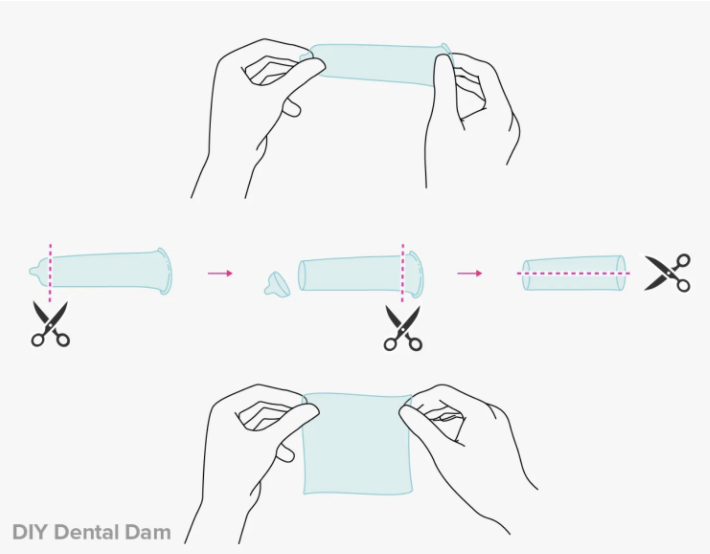Compulsory monogamy is the expectation that many, if not all, of us have grown up around. There is very little discussion about or representation of alternate romantic relationship structures. In the past few years, polyamory has become a little less foreign to the general public; however, that doesn’t mean that most people know how to practice ethical non-monogamy, also known as consensual non-monogamy or polyamory. With that in mind, this is a non-comprehensive guide on how to get started with opening up a relationship.
Some Key Terms
Before talking about the how, we need to talk about the what.
Compersion: A feeling of joy when a partner invests in and takes pleasure from another romantic or sexual relationship.
Metamour: The partner of one’s partner, with whom one does not share a direct sexual or loving relationship
Primary/nesting partner: In a hierarchical ENM relationship, the person (or persons) in the relationship with the highest degree of involvement or entanglement, or sometimes the person accorded the most importance.
Polyamory/ethical (or consensual) non-monogamy: when someone is in romantic or sexual relationships with multiple people at once. Does not necessitate marriage, like polygamy does.
Polygamy: more of a legal term, this refers to the practice of specifically marrying more than one person. Often religiously affiliated. Not interchangeable with polyamory.
Open: at least one person in a committed relationship is open to sex with other people; does not involve a romantic aspect. "Open" has evolved to become used as an umbrella term for all non-monogamy.
Swinging: when couples exchange partners.
Monogamish: when a couple is mostly monogamous with occasional extracurricular experiences.
Relationship anarchy: relationship anarchists believe in judging the value of relationships on a case by case basis, independent of sexual relationships, as opposed to how society tends to value sexual relationships over platonic relationships.
This is by no means an exhaustive list of all polyamory-adjacent terms but it’s a good start. An important distinction as well is polyamorous vs. open relationships. The New York Times offers a wonderful explanation of the difference between open relationships and other forms of polyamory. In short though, polyamory (as in the relationship structure, not the self-identifier) means that multiple people are romantically and/or sexually involved at the same time. Open relationships are when at least one partner is free to explore outside the relationship and often function for solely sexual purposes as opposed to romantic. All open relationships are a form of polyamory, but not all polyamorous relationship are open, such as in the instance of a closed triad.
Why Isn’t It Cheating?
Ah, the million dollar question. One of the biggest stigmas that polyamorous people face is that they are overly promiscuous cheating scum. In actuality, healthy, ethical polyamorous relationships have similar standards to monogamy in that both require openness, honesty, and communication.
Cheating is non-consensual; it is a unilateral decision to break set boundaries in a relationship. Polyamory, when done right, is a deliberate consensual collaboration in which the boundaries set, while different from monogamous relationships, similarly cannot be crossed.
Not to mention, cheating is possible in a polyamorous relationship; for example, if the people in the relationship agree that none of them can sleep with anyone that the people in the relationship know already, and then one of them sleeps with a friend, that is cheating.
We’ve Got the What, Now for the How
Research, research, and more research
When you embark on the journey to open up a relationship, there is a lot to learn. Some questions you might seek answers to in your research are “what is my own comfort level with x, y, z?” “how do I mitigate jealousy?” “what boundaries will make me feel safe?” “what needs to happen to ensure mutual trust?” There are external resources at the bottom of the article.
Opening your relationship is not a solution
If your motivation for opening your relationship is to fix existing issues, stop. It will only serve to enlarge the wedge between you and your partner. Opening up a relationship should be a conscious desire and choice, not a bandaid.
Setting boundaries
Before opening up the relationship, you must set boundaries and expectations to avoid inadvertently hurting someone. Note that you should be agreeing on boundaries, not rules. An explanation of the distinction can be found here. Some boundaries to consider might include who you do/do not use barrier methods with during sexual encounters, how much you share with a partner about your exploits/metamours, whether you want to meet metamours, and how shared spaces will function.
The big green monster in the room
Jealousy. This is what most people think of as their first objection to practicing polyamory. It will take work and patience to grapple with your jealousy, but it is definitely possible. An amazing resource for working through jealousy is The Jealousy Workbook by Kathy Labriola.
Communication nation
This is probably the most important tool in your relationship toolbox: COMMUNICATION. It is vital for any relationship, and that goes doubly for polyamory. While some people opt for a “don’t ask, don’t tell” policy about what happens outside of the relationship, this is not recommended. It allows anxiety to fester until it turns to resentment. Generally speaking, the best practice for most people is to be completely transparent about what they’re doing, with whom, for how long, practicing agreed upon boundaries.
As was mentioned, this is not an exhaustive guide and you will need to seek out more information. Below are some resources:
"The Ethical Slut" by Janet Hardy and Dossie Easton
"More than Two" by Franklin Veaux and Eve Rickert
"Building Open Relationships" by Dr. Liz Powell
"Opening Up: A Guide to Creating & Sustaining Open Relationships" by Tristan Taormino




























